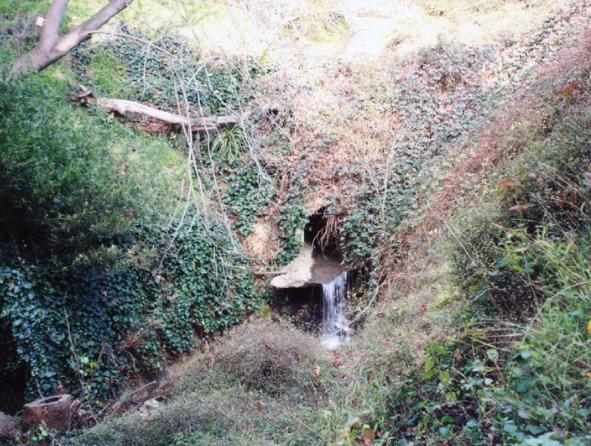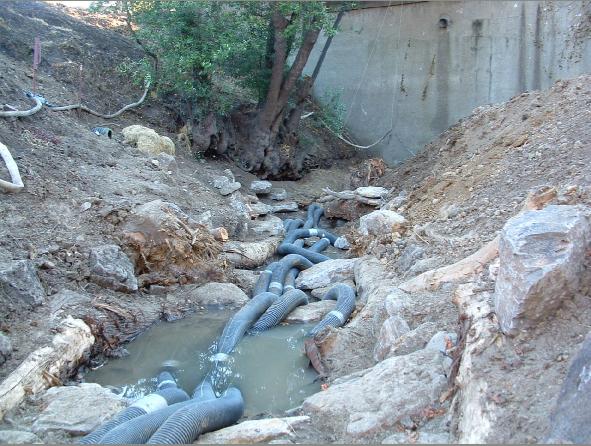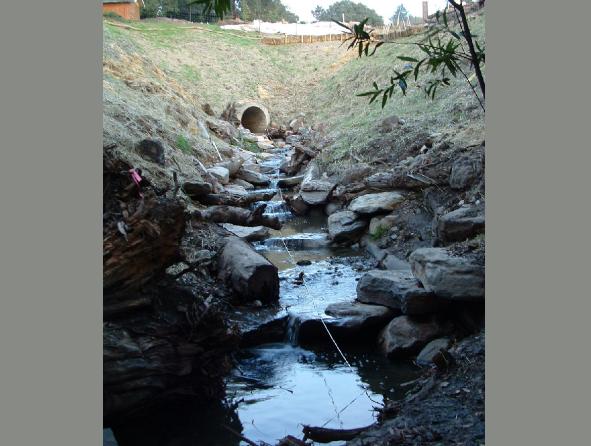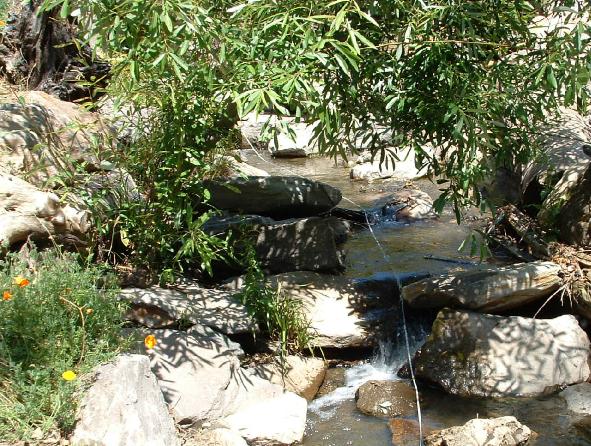 |
Congregation Beth El retained CH to design a step-pool channel in a severely incised, very steep ravine. The eroded channel was creating severe landsliding that instigated the collapse of mature riparian trees and a negative feedback cycle of toe erosion, bank instability, deflected flows and further bank instability. At the upstream culvert outfall, flow dropped 6-8 feet to an expanding scour pool, which created a barrier to future fish passage. In addition to the severity of the site constraints (e.g. 25 ft.-high banks at 1:1 slopes and steeper, and an adjoining driveway and building complex), the step-pool channel had to be fish-friendly, regardless of the existence of major, impassable barriers downstream of the site. CH prepared the hydraulic/geomorphic design and prepared and processed the necessary regulatory and City permits under considerable public scrutiny. CH also supervised restoration construction in the summer of 2003.
The project maintained its overall stability during the first winter season even though two floods occurred that were gaged by the City of Berkeley Dept. of Engineering as 10+-yr. recurrence interval events. As of 2008, the channel remains stable, however, the revegetation effort by others has been less successful. Heavy deer browse initially thwarted successful revegetation efforts. With the installation of exclusion fencing in 2005, the deer browse was eliminated, but lack of timely annual weeding and the xeric character of much of the site have combined to stunt the growth of the original native plantings outside the immediate active flow zone.
The project was incorporated into recent scientific research lead by professors from the University of Texas and the University of California-Berkeley (Chin, A., V. Resh et al.). The researchers evaluated the Codornices Creek project and several others in the East Bay and confirmed both the geomorphic stability and improved ecological function (for freshwater invertebrates) of the constructed step-pool morphology at the CBE site:
Original oral paper presented at GSA meeting, 28-31 October 2007, Denver, CO: Assessing geomorphological and ecological responses in restored step-pool systems, by Anne Chin (Texas A&M University), Alison H. Purcell (University of California, Berkeley), Jennifer W. Quan (University of California, Berkeley); GSA Abstracts 38(11)
return to project examples
previous example
next example
|










